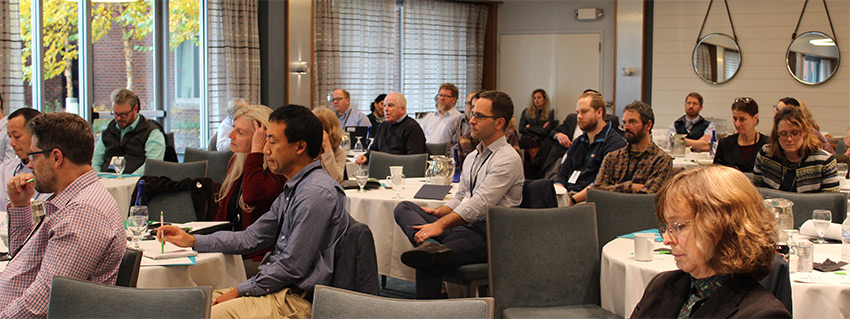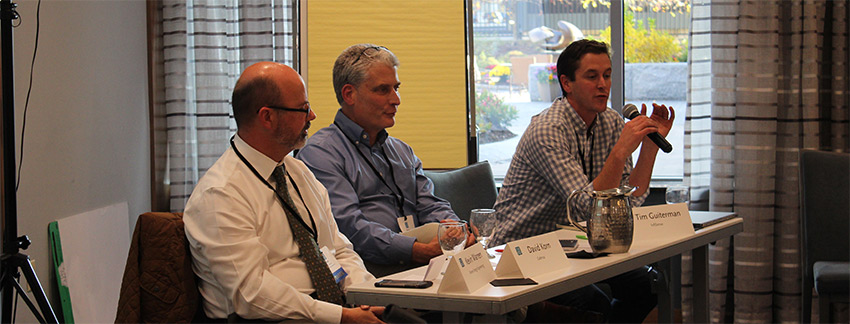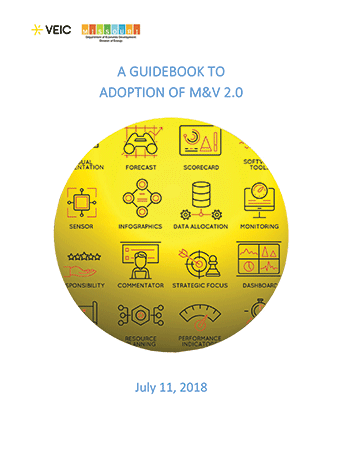By Giselle Procaccianti | Mon, December 10, 18
Sitting in a workshop hosted by NEEP last month, I found myself on a stepping stone towards the reality of the “grid of the future” and enjoying thought provoking presentations and discourse on a seemingly esoteric topic - the role of advanced measurement and verification in grid modernization.
So why would NEEP choose to host a webinar on this topic? I really do think that it’s because Elizabeth Titus, NEEP’s director of research and evaluation likes a good challenge! But all joking aside, I think it’s because the reality of a modern, integrated grid is upon us, and without the ability to collect and analyze large volumes of interval meter data by way of the many new technologies and software that are available today, the promise of a “smarter” grid may never be fully realized.
I can vividly recall my excitement as I anticipated the grid modernization plans by Eversource and National Grid, in their response to three key orders that were issued by Massachusetts’ Department of Public Utilities in 2014. Back then, I had just begun to wrap my head around topics like bi-directional communication, volt-VAR optimization, the internet of things, microgrids, and grid-connected electric vehicles. The idea of an electric grid supporting distributed energy resources and being responsive to customers while significantly reducing the effects of climate change and creating economic competitiveness was anathema to me – not just because I could not fathom how utilities would be compensated, how distributed generation would be credited, and how the overall design of an electric system would change; but because I most definitely could not begin to comprehend how to get all of the potential game-changers on the same page, which is needed in order to make the “grid of the future” a reality.
So yes, I do think that the timing and topic for NEEP’s webinar was opportune; without boring you with the very granular details of everything that transpired at the event, I think it would be worthwhile to share with you some of my key takeaways. So here we go...
Starting On A High Note
An opening presentation by NEEP’s executive director, Sue Coakley set the tone for the day. She highlighted the fact that as the grid rapidly changes into one that supports a low carbon future, where homes and buildings will be more grid interactive, there is a need for continuous development of measurement and verification (M&V) resources, in order to sustain the evolution of accompanying paradigms. Her “framework for the future” assumes energy program impacts will be most effective when reported at the building level. Speakers from the U.S. Department of Energy and ISO New England focused on some of the opportunities and challenges facing an energy landscape in which buildings are viewed and assessed as grid assets.. My takeaways from this session were: (1) Storage is currently a very hot topic and there is a need to think about it beyond batteries and in terms of value stacking; (2) M&V for distributed resources should be addressed at the retail meter, not beyond; (3) there is a need for M&V to move towards a whole-building approach as opposed to a component-level approach; and (4) capacity is no longer needed just to serve our customary peak loads and meet reserve requirements but rather is increasingly needed during contingencies that can occur off-peak, like during last Labor Day weekend’s heat wave, and when intermittent resources are unavailable.

Class in Session
The next session featured Vermont, where the workshop took place. Vermont happens to be a state that is helping to move forward the grid of the future, with some of its policies, utility programs, and R&D work. Although several presentations on this topic were given from the program, regulatory, evaluator, consumer, and utility perspectives, a few key points stood out for me: (1) the relevance of pilot programs that engage customers should never be understated; (2) very granular interval data from smart meters or devices has become a game changer as it provides faster feedback, allows contractors and customers to calibrate and troubleshoot quickly, provides motivation for future projects, and saves customers time through less data requests and on-site visits; and (3) policy makers still need to be convinced that the benefits of advanced M&V outweigh those of traditional M&V.

Another session gave updates from a Commercial and Industrial (C&I) pilot that has been ongoing with Eversource and United Illuminating in Connecticut, and about planning for a residential pilot. The goal of the C&I pilot is to test the use of advanced data analytics and collection tools as an approach to estimating savings impacts and to compare the findings with traditional M&V practices in terms of savings, certainty, and turnaround time for results. It was evident to me that although the process for the pilot is clearly challenging to start, the continuous feedback and established processes to support advanced M&V provide great appeal. However, questions like – “can we reduce the cost of EM&V?”, “can we get more timely data?”, “could this help us inform program implementation in real time?” – have not quite yet been definitively answered. We need to stay tuned, as the design of the residential pilot is still under discussion.
 The purpose of the final session was to explore topics and key issues that will help inform guidance and best practices when applying advanced M&V tools. While this topic could be even broader and could consume a whole day, this workshop showcased the following: a new product from Missouri that introduces advanced M&V to a policy audience, updates that advanced M&V is inspiring in the industry-standard documents published by the Efficiency Valuation Organization (EVO); a thoughtful discussion of what more is needed technically; and a reminder of the importance of keeping current in a rapidly changing industry. (We don’t want to be the Blockbuster Video when the world has moved on to Netflix and Amazon Prime). Topics like program design and delivery, and approaches to analysis were also discussed during this session. For me, one underlying factor that kept resurfacing in the most subtle of ways, was the need to continuously answer the question of whether, in the long-term, the customer will reap the benefits of all the work that is being put into testing advanced M&V data collection techniques and analytical tools.
The purpose of the final session was to explore topics and key issues that will help inform guidance and best practices when applying advanced M&V tools. While this topic could be even broader and could consume a whole day, this workshop showcased the following: a new product from Missouri that introduces advanced M&V to a policy audience, updates that advanced M&V is inspiring in the industry-standard documents published by the Efficiency Valuation Organization (EVO); a thoughtful discussion of what more is needed technically; and a reminder of the importance of keeping current in a rapidly changing industry. (We don’t want to be the Blockbuster Video when the world has moved on to Netflix and Amazon Prime). Topics like program design and delivery, and approaches to analysis were also discussed during this session. For me, one underlying factor that kept resurfacing in the most subtle of ways, was the need to continuously answer the question of whether, in the long-term, the customer will reap the benefits of all the work that is being put into testing advanced M&V data collection techniques and analytical tools.
Opportunities for the Future
Overall, I thought that NEEP’s workshop was a success. It underscored the point that in a world where buildings can capitalize on an optimal intermix of distributed energy generation, energy storage, energy efficiency, smart controls and load flexible technologies, there is a real opportunity for advanced measurement and verification. M&V is a backbone; when energy savings can be measured in real-time, and can offer high levels of accuracy and predictability to both grid-planners and customers, the opportunity would be realized and we will be one step closer to the dream of an integrated grid.
The PowerPoint slides for many of the presentations from this workshop are available online.
